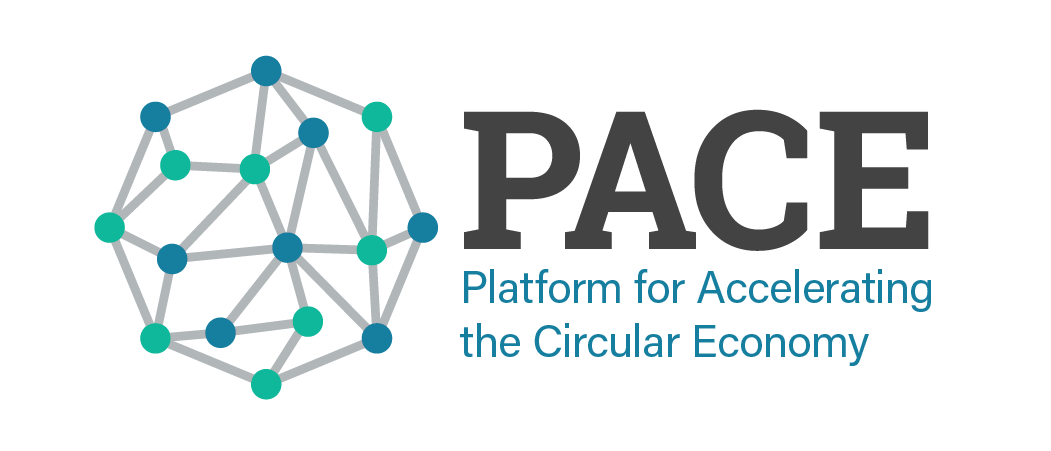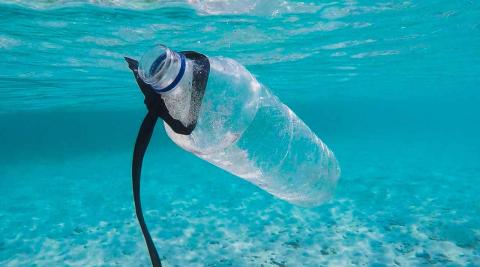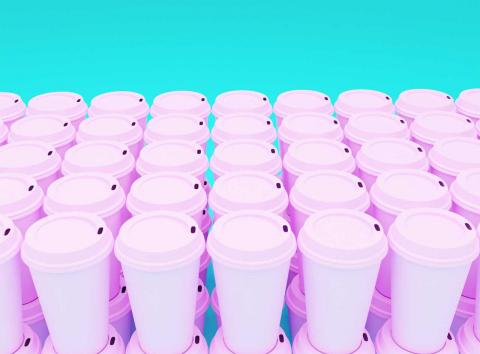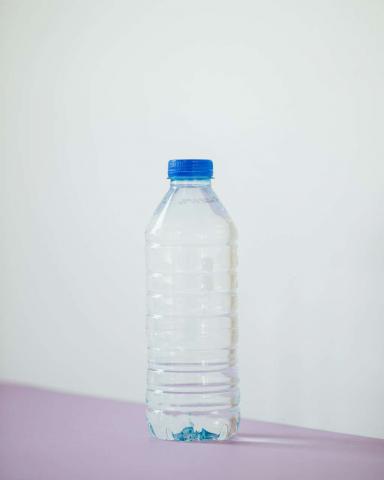Circular for Zero Environmental Strategy
This Action aligns with the following Calls to Action from the Circular Economy Action Agenda for Plastics
2. Incentivize and support product design for reuse and recycling of plastics
3. Address hygiene and safety concerns to promote plastics reuse
Ambition
In response to the issues such as growing consumption, industrialisation and urbanisation which threaten both the environment and the health of people around the world, Novo Nordisk has adopted a new environmental strategy – Circular for Zero – the aspiration to have zero environmental impact. Through this strategy, among other goals, Novo Nordisk aims to find new ways to design products that can be recycled or re-used, reshape our business to minimise consumption and waste, and work with suppliers who share Novo Nordisk’s goals.
Objectives
A key focus area in the Circular for Zero strategy is Circular Products. Novo Nordisk has developed a framework for circular product design that defines product circularity for devices and secondary packaging and sets direction towards zero environmental impact. Circularity is achieved through four levers that span the entire product flow: (1) Design for expected lifetime, (2) Design for sustainable materials, (3) Design for no waste in production, and (4) Design for recycling after use.
CO2, resource consumption and waste are the key environmental challenges, and Novo Nordisk measures how well their products perform on circularity measured as the CO2 impact per patient per year, the share of sustainable plastic as well as the recyclability of the product at the end-of-life. All device development projects use these three indicators to guide decisions on how to make products more circular.
Partners
Novo Nordisk
Insulin Pen Take-back Programme
This Action aligns with the following Calls to Action from th Circular Economy Action Agenda for Plastics
6. Set-up functioning collection systems
3. Address hygiene and safety concerns to promote plastics reuse
Ambition
Novo Nordisk has a clear ambition to become a fully circular company and, in this spirit, is initiating the Insulin Pen Take-back Programme with the aim to target an urgency that the pharmaceutical industry can unite on. For people living with diabetes, their insulin pen is an essential daily companion. Even if an insulin pen consists of around 77% plastic, it cannot be thrown into the plastic recycling bin along with empty juice bottles and food packaging. The Insulin Pen Take-back Programme will launch a take-back pilot from users and scale up the recycle process used to dismantle the pens and reuse the plastic and glass parts in new products.
Objectives
The programme pilot in Denmark has resulted in the creation of a 15-partners cross public and private partnership, Returpen. In order to recycle the plastic parts, Novo Nordisk was able to work with a Danish design firm to create office chairs from the discarded plastic and lamps made from the glass from the discarded insulin vials. The upcoming objectives of this programme are to conclude the pilot programme in Denmark, to scale up the programme - specifically by designing pilot solutions for the UK, France, Brazil, China and the US - and to develop a take-back strategy roadmap.
Partners
Novo Nordisk
See the full list of partners here
Sustainable Business Model Innovation Framework
PACE Partner TNO is contributing to the following Calls to Action from the Circular Economy Action Agenda
-
Guide and Support New Business Models for Environmental, Financial, and Social Triple-Win (Electronics, CTA 4; Textiles, CTA 4; Plastics, CTA 5)
Ambition
The Sustainable Business Model Innovation Framework aims to support organizations to make a systemic shift to sustainable business. It assists the steps of the business model innovation process to support decision-making and attitudes towards circular and sustainable innovations. It combines multi-actor and multi-value business model design with multi-level analysis from the national, regional, sector and value chain economic structures, as well as impact and lifecycle analysis and material flow models and approaches.
Objectives for 2021
TNO has expanded its work on Sustainable Business Model Innovation. Currently, a portfolio of several projects on ‘collaborative business modelling’ has been set up and a broader team is working on several national and international applications in circularization of, among others, Smart Industry (Industry 4.0, Materials Passports and a circular business model typology), flooring industry, small food supply chains and food waste. In 2021, the focus lies on the expansion of the portfolio on Collaborative Business Modelling, on the concept for governance of the Materials Passports and on the community of practice in circularity and servitization in Smart Industry.
Partners
TNO (PACE Partner)
BoP Inc, Nyenrode Business University, The Next Organization, University of Twente
Circular Jobs Monitor
PACE Partners Circle Economy, Goldschmeding Foundation, UNEP and the Ellen MacArthur Foundation are contributing to the following Calls to Action from the Circular Economy Action Agenda
-
Integrate and Advance Decent Work in the Transition to a Circular Economy (Electronics, CTA 10; Textiles, CTA 9; Plastics, CTA 9)
-
Investigate the Socio-Economic Impacts of a Circular Economy for Textiles (Textiles, CTA 10)
-
Investigate Environmental and Socio-Economic Impacts of Renewable Material Inputs for Plastics (Plastics, CTA 10)
Ambition
The Circular Jobs monitor is an online tool to provide policymakers, economists, and labour organisations with insights into the relationship between the circular economy and the labour market. These insights facilitate the design of evidence-based strategies for promoting the circular economy, required education pathways, and a benchmark of current circular activity against which to monitor future progress.
Objectives for 2021
The objective is to scale through digital tools by extending and increasing the functionality of the Circular Jobs Monitor, including linking data on the trends and evolutions in the labour market over time and monitor practical examples of how circular strategies impact jobs and skills on the Knowledge Hub.
Partners
Circle Economy, Goldschmeding Foundation, UNEP and the Ellen MacArthur Foundation (PACE partners)
TU Dortmund, University of Sussex Business School, HIVA at KU Leuven
BioSustainable Technology
This Action aligns with the following Calls to Action from the Circular Economy Action Agenda
-
Incentivize and Support Product Design for Reuse and Recycling of Plastics (Plastics, CTA 2)
-
Incentivize and Support Design for Longevity and Recyclability (Textiles, CTA 1)
Ambition
The Government of Canada, through the Canadian Plastics Innovation Challenge, is financing Singular Solutions project to develop a BioSustainable™ Additive that could help plastic textile waste to biodegrade in long-term composting landfill facilities, creating topsoil-quality humus without generating harmful microplastics. Through this action, Canada is funding the development of this additive that will contribute to circularity requirements for plastic and textile waste.
Objectives
The Singular Solutions Inc. BioSustainable™ Additive Project is currently at the proof of concept stage, which is scheduled to be complete by the end of 2021. If chosen, the next steps could consist of developing the pilot production for (1) the recycling of synthetic textile and agricultural films into lumber-like structural materials, (2) the converting of non-usable plastic waste into digestible matter and (3) completing the lab scale development to capture CO2, collect organic waste and use digestible matter to produce bioplastics.
Partners
The Government of Canada, Singular Solutions Inc., Devonshire Group Inc.
Plastics Pact Network
This Action aligns with the following Calls to Action from the Circular Economy Action Agenda for Plastics
1. Agree which plastics can be eliminated and prepare the market to phase them out
4. Stimulate consumer adoption of plastic reuse
6. Set-up functioning collection systems
Ambition
The New Plastics Economy, initiated by the Ellen MacArthur Foundation, has set out a vision for a circular economy for plastics, whose realization will require unprecedented levels of collaboration, both globally and at national and regional levels, to work towards solutions tailored to each and every local context.
In this spirit, the Ellen MacArthur Foundation's Plastics Pact Network aims to bring together businesses from across the plastics system, governments, NGOs and others in the national and regional (multi-country) context to implement solutions towards a circular economy for plastic, tailored to each geography. These solutions could relate, for instance, to the following areas:
-
Eliminate unnecessary and problematic plastic packaging through redesign and innovation.
-
Move from single-use to reuse where relevant
-
Ensure all plastic packaging is reusable, recyclable, or compostable
-
Increase the reuse, collection, and recycling or composting of plastic packaging
-
Increase recycled content in plastic packaging
Each pact is led by a local partner organisation, and has set specific, ambitious plastics' circular economy targets, reporting on progress every year.
Objectives
To date, pacts are covering 27 countries across North America, South America, Europe, Africa and the Pacific, all working towards a common vision of a circular economy for plastics.
Partners
The Ellen MacArthur Foundation, The Governments of Canada, Chile, the Netherlands, South Africa and WRAP.
A full list of participating Plastics Pacts, their targets and organisations involved can be found here.
Healthy Oceans and Clean Cities Initiative
This Action aligns with the following Calls to Action from the Circular Economy Action Agenda for Plastics
2. Strategically plan sorting and recycling facilities in compliance with trade regulations
Ambition
The Healthy Oceans and Clean Cities Initiative (HOCCI) seeks to strengthen the institutional capacity to support the operationalization and localization of the Philippines’ upcoming National Plan of Action for the Prevention, Reduction, and Management of Marine Litter (NPOA-ML) and the development of improved data collection and waste management systems. HOCCI aims to enable local governments and communities in the Philippines to reduce marine plastic pollution. Its approach is based on three action levels:
-
Community level: where pilot initiatives are developed and tested.
-
National level: to develop proofs of concept and local implementation mechanisms.
-
Regional and global level: with the aim to contribute to Regional (ASEAN) and global practices and policies (such as the SDGs and UN-Habitat Waste Wise Cities Assessment Tool)
Objectives
HOCCI’s main objective is to localize the national plan of action for marine litter in six partnering cities in the Philippines. For this purpose, many activities will be conducted, among which: waste surveys using WaCT (Waste Wise Cities Tool); city stakeholder workshops on 3Rs; developing a marine litter action plan; implementation of the pilots; development of knowledge products, capacity building and/or information, education, and communication; development of three policy papers; monitoring and evaluation of progress in implementing the city marine litter action plan; sharing good practices, lessons learned and future actions.
Partners
IGES, UN-Habitat
Considerations and Criteria for Sustainable Plastics from a Chemical Perspective
This Action aligns with the following Calls to Action from the Circular Economy Action Agenda for Plastics
10. Investigate environmental and socio-economic impacts of renewable material inputs for plastics
5. Guide and support news business models for environmental, financial, and social triple-win
Ambition
To be considered sustainable, plastics must be managed within a sustainable materials management system (a Circular Economy) to avoid the creation of waste, toxics and pollution. Sustainable plastics must be part of a holistic and principle-based approach to sustainable material flows.
RIVM is working with the OECD working group "Considerations and Criteria for Sustainable Plastics from a Chemical Perspective" to develop sustainable criteria from the chemical perspective for plastics.
Objectives
The objective of the OECD working document is to inform designers who select plastics for use in products, as well as policy makers and those who procure products, on considerations and criteria for plastics based on principles of sustainable product design for which there is considerable consensus.
Partners
RIVM, OECD working group "Considerations and Criteria for Sustainable Plastics from a Chemical Perspective" joint collaboration of OECD Chemicals Committee and the OECD Working Party on Resource Productivity and Waste.
Oceans Plastic Charter
This Action aligns to the following Calls to Action from the Circular Economy Action Agenda for Plastics
2. Incentivize and support product design for reuse and recycling of plastics
6. Set-up functioning collection systems
Ambition
Canada spearheaded the Ocean Plastics Charter during its 2018 G7 Presidency. The Charter takes a comprehensive lifecycle approach to address plastic pollution and waste, and lays the groundwork to ensure that plastics are designed for reuse and recycling, in order to protect the environment and keep a valuable resource in the economy. To date, 26 governments and over 70 businesses and other organizations have endorsed the Charter. In support of broader international efforts, the Charter is aligned with the 2030 United Nations Sustainable Development Agenda and specifically commitments to achieve sustainable consumption and production (SDG 12) and the conservation and sustainable use of oceans, seas and marine resources (SDG 14).
Objectives
The signatories of the Charter commit to take action toward a resource-efficient lifecycle management approach to plastics in the economy by:
- Sustainable design, production and after-use markets
- Collection, management and other systems and infrastructure
- Sustainable lifestyles and education
- Research, innovation and new technologies
- Coastal and shoreline action
To advance the goals of the Charter, the Government of Canada is investing $100 million to support improved waste management in developing countries. Moreover, in order to foster collaboration between all Charter endorsees, share best practices and help turn commitments to action, it is exploring hosting high-level events for Charter endorsees at major international events in 2021.
Partners
The Government of Canada, the Netherlands, Chile, Costa Rica, Peru & Rwanda, the European Union, Coca-Cola Company and Unilever
See the full list of partners here
Realize mandatory use of recycled content in products
This Action aligns with the following Calls to Action from the Circular Economy Action Agenda for Plastics
2. Incentivize and support product design for reuse and recycling of plastics
Ambition
In order to end pollution and reduce CO2 emissions, and to strengthen the demand for recycled materials, the Netherlands commits to working together with partners to internationally promote and realize, a mandatory use of a minimum percentage of recycled material in products, as now stipulated by the European Circular Economy Action Plan. In line with this, the Netherlands is working with partners worldwide, including the New Plastics Economy Global Commitment and the Plastic Pacts Network, to ensure, to the extent possible, that we work towards the inclusion of 30% recycled contents on average in new plastic products and packaging by 2030. The Netherlands is conducting a research to identify policy options to contribute to a stronger demand and more resilient market for recycled plastic content. This research will help in steering the discussions, offering research-based policy options and may help speed up the market for secondary materials and applications of recycled content.
Objectives
The Netherlands wants to take steps to promote and realize a mandatory use of a minimum percentage of 30% recycled content in new plastic products and packaging by 2030, starting in an EU context.
Partners
The Government of the Netherlands
Pagination
- Previous page
- Page 2
- Next page










